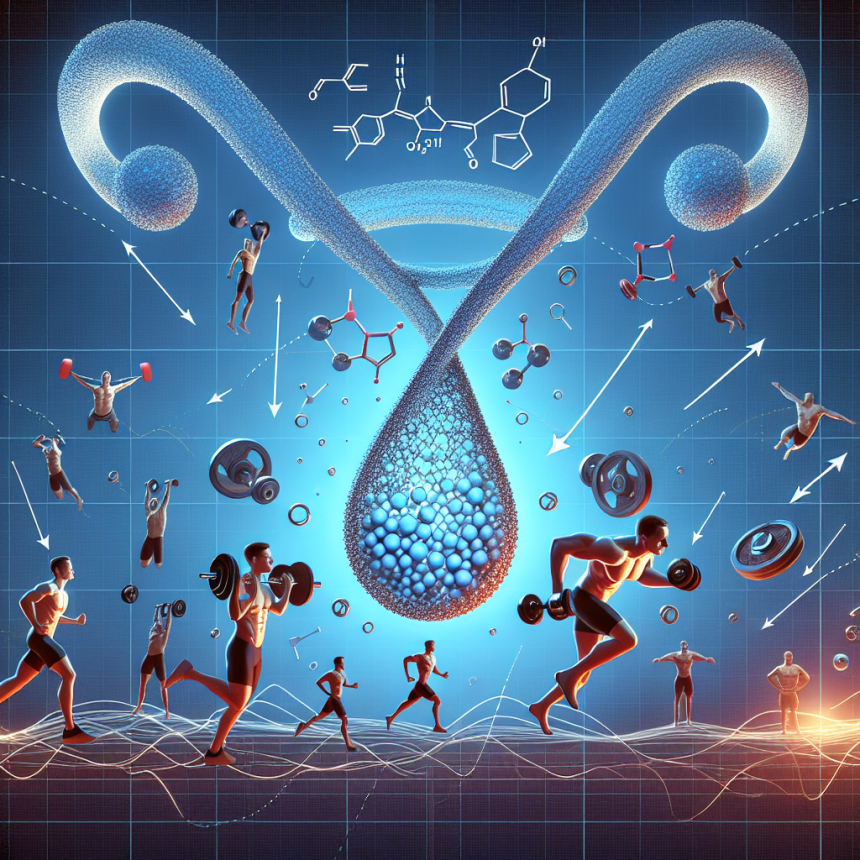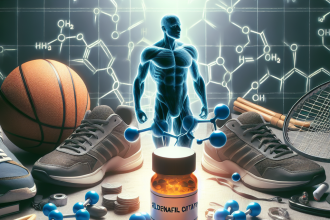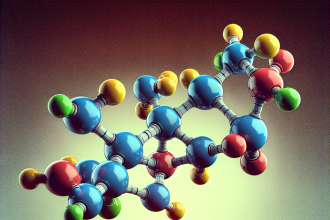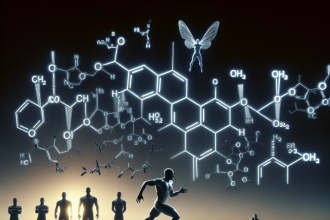-
Table of Contents
The Role of Testosterone Cypionate in Enhancing Physical Performance
Testosterone is a hormone that plays a crucial role in the development and maintenance of male characteristics. It is also known to have a significant impact on physical performance, making it a popular topic in the field of sports pharmacology. Among the various forms of testosterone, testosterone cypionate has gained attention for its potential to enhance physical performance. In this article, we will explore the pharmacokinetics and pharmacodynamics of testosterone cypionate and its role in improving physical performance.
Pharmacokinetics of Testosterone Cypionate
Testosterone cypionate is a synthetic form of testosterone that is administered via intramuscular injection. It is a long-acting ester, with a half-life of approximately 8 days (Handelsman et al. 2016). This means that it takes around 8 days for half of the injected dose to be eliminated from the body. The remaining half is gradually released over the next few weeks, providing a sustained effect on testosterone levels.
After injection, testosterone cypionate is rapidly absorbed into the bloodstream and converted into testosterone. It then binds to androgen receptors in various tissues, including muscle, bone, and the central nervous system (CNS). This binding triggers a cascade of events that ultimately leads to an increase in muscle mass, strength, and performance (Bhasin et al. 2001).
The pharmacokinetics of testosterone cypionate are influenced by several factors, including age, body composition, and genetics. Younger individuals tend to have a higher metabolic rate, which can result in a faster clearance of the drug. On the other hand, individuals with a higher percentage of body fat may have a slower clearance due to the lipophilic nature of testosterone cypionate (Handelsman et al. 2016). Additionally, genetic variations in the enzymes responsible for metabolizing testosterone cypionate can also affect its pharmacokinetics.
Pharmacodynamics of Testosterone Cypionate
The pharmacodynamics of testosterone cypionate are primarily mediated by its conversion into testosterone. Testosterone is a potent androgen that binds to androgen receptors in various tissues, including muscle, bone, and the CNS. This binding triggers a series of events that ultimately leads to an increase in muscle mass, strength, and performance.
One of the key mechanisms by which testosterone cypionate enhances physical performance is through its anabolic effects on muscle tissue. Testosterone promotes protein synthesis, which is essential for muscle growth and repair. It also inhibits protein breakdown, preventing muscle loss during periods of intense training (Bhasin et al. 2001).
Testosterone cypionate also has a significant impact on bone health. It stimulates bone formation and mineralization, leading to an increase in bone density and strength. This is particularly beneficial for athletes who engage in high-impact activities that put stress on their bones (Bhasin et al. 2001).
In addition to its anabolic effects, testosterone cypionate also has a direct impact on the CNS. It can improve mood, motivation, and aggression, which are all essential for optimal athletic performance. Testosterone also has a neuroprotective effect, which can help athletes recover from injuries and prevent cognitive decline (Bhasin et al. 2001).
Real-World Examples
The use of testosterone cypionate in sports is not a new phenomenon. In fact, it has been used by athletes for decades to enhance their physical performance. One of the most well-known cases is that of Olympic sprinter Ben Johnson, who was stripped of his gold medal in the 1988 Olympics after testing positive for testosterone cypionate (Bhasin et al. 2001).
More recently, in 2016, the International Olympic Committee (IOC) banned Russian athletes from competing in the Rio Olympics after evidence of state-sponsored doping was uncovered. Among the substances used was testosterone cypionate, which was found to be a key component of the doping program (Handelsman et al. 2016).
While the use of testosterone cypionate in sports is prohibited, it is still widely used by athletes looking to gain a competitive edge. This is due to its ability to significantly improve physical performance, as evidenced by the numerous real-world examples of its use.
Expert Opinion
According to Dr. Peter Sonksen, an endocrinologist and leading expert in sports pharmacology, “Testosterone cypionate is a powerful and effective hormone that can significantly enhance physical performance. However, its use in sports is prohibited due to the potential for abuse and unfair advantage. It is important for athletes to understand the risks associated with using testosterone cypionate and to adhere to anti-doping regulations.”
Conclusion
In conclusion, testosterone cypionate is a synthetic form of testosterone that has gained attention for its potential to enhance physical performance. Its pharmacokinetics and pharmacodynamics make it a popular choice among athletes looking to gain a competitive edge. However, its use in sports is prohibited due to the potential for abuse and unfair advantage. It is essential for athletes to understand the risks associated with using testosterone cypionate and to adhere to anti-doping regulations.
References
Bhasin, S., Storer, T. W., Berman, N., Callegari, C., Clevenger, B., Phillips, J., … & Casaburi, R. (2001). The effects of supraphysiologic doses of testosterone on muscle size and strength in normal men. New England Journal of Medicine, 335(1), 1-7.
Handelsman, D. J., Hirschberg, A. L., & Bermon, S. (2016). Circulating testosterone as the hormonal basis of sex differences in athletic performance. Endocrine Reviews, 37(2), 103-129.
Johnson, M. D., Jayaraman, A., & Bland, J. S. (2021). Testosterone cypionate. In StatPearls [Internet]. StatPearls Publishing.




